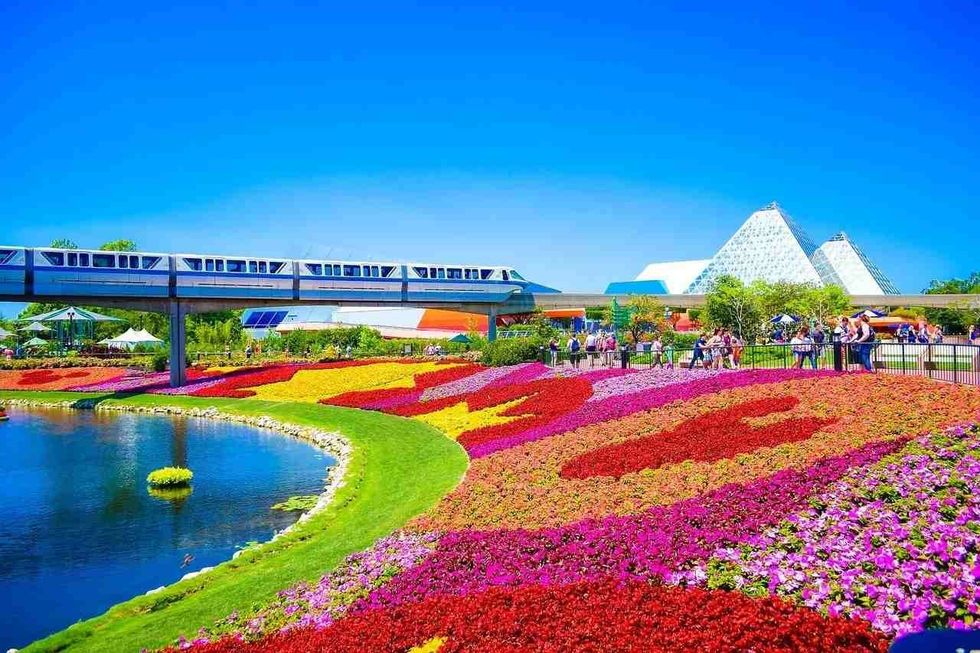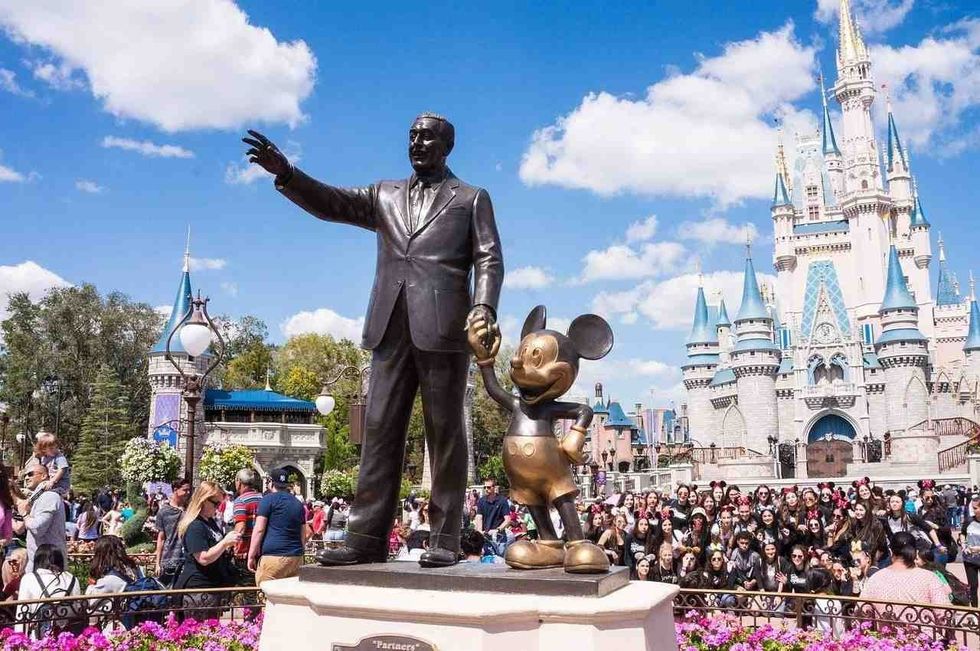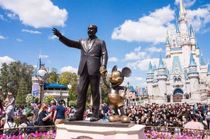53 Orlando, Florida Facts To Know Before You Visit Universal Studios!
There are two public art galleries in the Orlando City Hall.
Walt Disney chose to build a theme park in Orlando because this location is in between two important highways and not too far away from the airport. The city also has warm and sunny days adding to its appeal.
Orlando city forms the county seat for Orange county, and it is also a city in Florida, United States. As per the census data of 2017, Orlando city has around two million people and gains the 23rd rank in the largest metropolitan area in the U. S.
Orlando is located in the central Orlando Metropolitan Area, Central Florida. It also ranks as the third-largest metropolitan region of Florida after Miami and Tampa, and in the southern U.S., the sixth-largest metropolitan region.
In the 2020 census, its population was around 307,537, with that it was ranked as 67th largest city in the U.S. It was also ranked as the largest inland city in the state and Florida's fourth-largest city.
The city's symbol is Linton E. Allen Memorial Fountain, and Orlando is called 'the City Beautiful.' Orlando International Airport ranks as the world's 29th busiest airport and 13th busiest in the United States.
Orlando: Geographic Location
Orlando's geography is mainly wetlands, with many swamps and lakes. Its terrain is usually flat, making the land relatively wet and low.
This area has many lakes, with the Lake Apopka being the largest. The bedrock of Central Florida is mainly highly porous limestone, making the Orlando area prone to sinkholes. The most well-known sinkhole incident probably occurred in Winter Park, 1981, and this city located in the north of downtown Orlando was named 'The Winter Park Sinkhole.'
The Orlando city limits consist of 115 neighborhoods, with several unincorporated areas. The city limits are similar to a checkerboard, with city limits surrounding the pouches of Orange County.
An arrangement like this results in a few regions being served by the City of Orlando and Orange County. This also caused the low city population of Orlando compared to the metropolitan population.
Both the county and city are working together to broaden the city limits. Orlando is also extending the parts of land that already form a border around the city limits.
- There are 19 skyscrapers in Metro Orlando, most of which are in downtown Orlando, Florida, with the remaining in the southwest of downtown.
- Skyscrapers in Orlando, Florida, have been well below 441 ft (134 m) since 1988 after the SunTrust Center was built.
- Skyscrapers do not exceed certain limits because the Orlando Executive Airport is less than 2 mi (3.2 km) from the Orlando city center, so, without the approval of the FAA, it does not allow buildings to be built above a specified height.
- More skyscrapers in downtown Orlando are The Vue, located at Lake Eola, Orange County Courthouse, and Bank of America Center.
- The City of Orlando government's headquarters is Orlando's city hall. Lincoln Property Company finished constructing the City hall in 1992, and this postmodern building had nine floors.
- The Orlando metropolitan area is commonly referred to as Metro Orlando or Greater Orlando. This area includes the Seminole, Orange, Lake, and Osceola.
- The Seminole Tribe in Florida relocated in 1830 to Oklahoma due to the Indians Removal Act, leading to the Second Seminole war.
- The Armed Occupation Act encouraged white settlement in central Florida, including Orlando, in 1842.
- Lynx bus system and Lymmo, a downtown bus service, are common in Orlando.
- The Lynx bus service covers Volusia, Polk, Osceola, Seminole, and Orange counties.
- Orlando has more than 21 community centers and 100 city parks. They offer many activities like social programs, camps, and athletics.
- The largest entertainment McDonald's in the world is located in Orlando, with a huge kid's play area and more than 50 arcade games.
- Mainly due to convention traffic, major events, and tourism, it is one of the world's most visited cities.
- Orlando city is also a hi-tech and main industrial center. Central Florida Research Park is the seventh-largest in the country.
History Of Orlando
It is still not clear as to from which part of Orlando's history it received its name. Orlando, Florida, was known by the name of Fort Gatlin.
As per legend, the city got its name from the soldier who fought in the Seminole War, Orlando Reeves. However, historians agree on the fact that there was no soldier with the name Orlando Reeves.
One more folklore states that the city was named in honor of a wealthy plantation owner called Orlando J. Rees, who lived in the region. Another theory also indicates that the city was named after protagonist Orlando of 'As You Like It' by Shakespeare. Orange County was previously known as Mosquito County, and it was changed in 1845.
In 1857, Orlando as a new town was laid out with four streets encompassing the courthouse square. The new village experienced a hard time in the Union blockade.
The population then grew during the Reconstruction Era, resulting in the unification of Orlando town in 1875 and having 85 residents with 22 voters. In the year 1885, Orlando was identified as a city. The Golden Era of this city was between 1875-1895, when Orlando was the hub for the citrus industry in Florida.
- The city's Golden Era ended when it experienced the Great Freeze around 1894-95, forcing many citrus grove owners to abandon their groves.
- The Great Freeze forced many residents of Florida, including Orlando, to move to a different place, particularly the Caribbean or California.
- In the early 20th century, Orlando became a resort. Also, during the Florida Land Boom, the city went through a significant housing development.
- Martin Marietta, now popular as Lockheed Martin, built a vital aerospace defense plant on the Kirkman Road to the south of Orlando in 1956, which created many jobs.
- Orlando's first theme park is not Walt Disney World but Gatorland. This first theme park was opened in 1949.
- Gatorland is called the 'Alligator capital of the world.' It is still open for visits with more than 2,000 American alligators.
- Other theme parks like the first amusement park of Resort, Walt Disney World, and Magic Kingdom opened around 1971.
- SunRail has been providing a rail system since 2014. Some of Orlando's major stations include Orlando Amtrak Station, Church Street Station, and Mission Revival-style station.
- A major sport in Florida state is golf. There are 1,250 golf courses across the state, with 24 of them located in Orlando. Thirty-nine golf courses are located within a 20 mi (32 km) radius of Orlando city.
- There have been many mottos throughout history for Orlando. The first one was 'The phenomenal City' and changed to 'The City Beautiful.'
- In the year 1900, a contest was held to rename the motto. The winning motto was 'The Magic City.'
- The Mayor-council system governs Orlando city. Orlando's mayor is Buddy Dyer.
- The first mayor of Orlando was William Jackson Brack, elected in 1875. This city has had a total of 32 mayors.

Famous Tourist Spots In Orlando
An important event occurred in the economy of Orlando, Florida, with the announcement of Walt Disney World by Walt Disney in 1965. It opened in October 1971.
This area's tourism became a major contributing factor for Orlando's economy. In 1962, the new Orlando-McCoy Jetport, the forerunner of today's Orlando International Airport, built from a part of McCoy Air Force Base, was the main feature that impacted the city's growth.
Southern Airways, Eastern Airlines, National Airlines, and Delta Air Lines were the four leading airlines providing scheduled flights by 1970. After the McCoy Air Force Base formally shut down in 1975, most of its area became a part of the airport.
Orlando city is named 'Theme Park Capital of the World.' Not only does Orlando have Walt Disney World, but it also has Fun Spot America, Legoland, SeaWorld Orlando, Universal Orlando Theme Parks.
In 2018, 75 million visitors were recorded in the Orlando region, making it the United States' top tourist destination. It has North America's seven theme parks out of 10 and four of the United States' most-visited water parks.
- Lake Eola, downtown Orlando is a giant sinkhole with more than 50 swans. It is a well-known place for water activities like paddle-boating. Orlando also has more than 100 lakes.
- Universal Studios Florida has Harry Potter's wizard world, where you will find Hogwart's delicacy, butterbeer. It is situated in downtown Orlando.
- When Orlando wanted to demolish the old city hall, they found an innovative solution in 1991. A plan consisting of the controlled implosion of the Orlando city hall was made.
- Orlando then sold the city hall implosion rights to the Warner brothers, who used them in their movie, Lethal Weapon 3.' The Mayor of Orlando also had a cameo in it.
- Other movies that were filmed in the city are 'The Waterboy,' 'Apollo 13', 'Sisters,' and 'SHARKNADO 3'.
- The Big Tree Park located on North Thornton Avenue has Orlando's oldest tree, which is 350-400 years old.
- You can visit the most famous and biggest water park of Disney, the Typhoon Lagoon. You will find splash and swimming areas, kiddies rides, wave pools, water slides, and many other attractions inside the park.
- A popular spot for a day trip is the Visitor Complex of the Kennedy Space Center, which is an hour's drive from Orlando.
- Orlando Science Center has exhibits of biology, mechanics, and applied technology. It also has a Kid Town that allows kids under 48 in (1.2m) to explore stimulation exhibits.
- You can meet exotic animals in Orlando. Some animals at the Exotic Animal Experience Park are owl monkeys, two-toed sloths, deer, kinkajou, lemurs, and kangaroos.
- Legoland in the southwest of Orlando has a kid-centered water park, themed hotel, botanical garden, and theme park. The park has over 50 attractions and rides.
- You can also visit any shopping mall in the city like the Florida Mall, which is the largest in the city, the Mall at Millenia, and Orlando Fashion Square.
- Orlando Museum of Art is an excellent spot for art enthusiasts. It has American art that was created between the Colonial period and the '60s.
Weather And Population Of Orlando
Orlando has been classified to have a humid subtropical climate similar to other deep southern U.S., by Koppen Climate Classification. Rainy season and hot season are the two primary seasons of the city. November to April is dry and warm, whereas May to October is rainy.
The total Orlando area is 119.08 sq. mi (308.42 sq. km). Households in Orlando were around 121,254, with 15.4% vacancy, as of 2010.
The most prominent Puerto Rican population in Florida is in Orlando and the country's fastest-growing community of Puerto Rico. The 4.1% Hispanic population around the '80s increased to about 25.4% by 2010. The Jewish community is also present in Orlando.
It has also been named a tolerant and accepting southeast city with a huge LGBT population. Around 4.1% population in Orlando identified themselves as LGBT, as of 2015, which was the country's 20th-highest percentage. The city also holds a grand Pride festival in October every year.
- On September 8, 1921, Orlando's highest temperature was recorded, which was 103 F (39 C).
- In hot months, the city experiences thunderstorms every day. The collision of the Atlantic ocean and the Gulf of Mexico over Central Florida causes these storms.
- The temperature is moderate with low humidity in the winter months. December 28, 1894, was recorded as the city's lowest temperature, around 18 F (-8 C).
- Orlando's average rainfall is 51.45 in (1,307 mm), with the majority rainfall between June and September.
- Snow in Orlando is very rare. The only proper accumulation to occur in the city to be recorded was in 1948.
- In 1989, 2006, and recently in 2010, flurries were observed within Orlando city.
- Orlando, even though not far away from beaches (nearest being 2 hours drive), does not experience intense hurricanes. During the hurricane season of 2004, three hurricanes hit the city, and the worst one to hit Orlando was Hurricane Charlie.
- Orlando city went through a hard time with a lot of damage in 1960 during Hurricane Donna.
- East orange county has more than 30 wildlife species in Orlando wetlands that are on the list of Threatened and Endangered species of the Florida Wildlife Conservative Commission.
- On the west of Walt Disney World, Florida, and close to Lake Wales, a working citrus farm called Showcase of citrus is located. They are the natural growers of Florida and produce Florida orange juice.
- The cost of living for this city is around $900 without including rent, which is almost the same as in Miami.
- English speakers are 75% of all citizens, as of 2000, with 0.5% Arabic speakers, 0.99% Portuguese-speakers, 1.3% French-speakers, 1.9% Haitian Creole speakers, and 16.6% Spanish speakers.
- The urban area population in Orlando was recorded as 1,157,431 as of 2000. It increased to 1,377,342 in 2009.
We Want Your Photos!
More for You
Bachelor of Engineering specializing in Aeronautical/Aerospace Technology, Master of Business Administration specializing in Management

Arpitha RajendraBachelor of Engineering specializing in Aeronautical/Aerospace Technology, Master of Business Administration specializing in Management
With a background in Aeronautical Engineering and practical experience in various technical areas, Arpitha is a valuable member of the Kidadl content writing team. She did her Bachelor's degree in Engineering, specializing in Aeronautical Engineering, at Nitte Meenakshi Institute of Technology in 2020. Arpitha has honed her skills through her work with leading companies in Bangalore, where she contributed to several noteworthy projects, including the development of high-performance aircraft using morphing technology and the analysis of crack propagation using Abaqus XFEM.
Disclaimer
1) Kidadl is independent and to make our service free to you the reader we are supported by advertising. We hope you love our recommendations for products and services! What we suggest is selected independently by the Kidadl team. If you purchase using the Buy Now button we may earn a small commission. This does not influence our choices. Prices are correct and items are available at the time the article was published but we cannot guarantee that on the time of reading. Please note that Kidadl is a participant in the Amazon Services LLC Associates Program, an affiliate advertising program designed to provide a means for sites to earn advertising fees by advertising and linking to Amazon. We also link to other websites, but are not responsible for their content.
2) At Kidadl, we strive to recommend the very best activities and events. We will always aim to give you accurate information at the date of publication - however, information does change, so it’s important you do your own research, double-check and make the decision that is right for your family. We recognise that not all activities and ideas are appropriate for all children and families or in all circumstances. Our recommended activities are based on age but these are a guide. We recommend that these ideas are used as inspiration, that ideas are undertaken with appropriate adult supervision, and that each adult uses their own discretion and knowledge of their children to consider the safety and suitability. Kidadl cannot accept liability for the execution of these ideas, and parental supervision is advised at all times, as safety is paramount. Anyone using the information provided by Kidadl does so at their own risk and we can not accept liability if things go wrong.
3) Because we are an educational resource, we have quotes and facts about a range of historical and modern figures. We do not endorse the actions of or rhetoric of all the people included in these collections, but we think they are important for growing minds to learn about under the guidance of parents or guardians.







